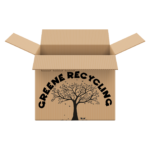
Insights
The Rise of OCC (Cardboard): What Small Business Owners Need to Know
Why Corrugated Cartons?
Corrugated cartons, made from multiple layers of linerboard, offer durability and protection, making them ideal for shipping goods. They’re lightweight yet strong, and their resistance to pressure and tears makes them a favorite in logistics, particularly in e-commerce and food & beverage sectors. As consumers lean more toward eco-friendly options, the recyclable nature of these cartons—made predominantly from recycled paper—adds to their appeal.
Impact of COVID-19
The pandemic had mixed effects on the corrugated carton market. Initial supply chain disruptions and lockdowns slowed production, but the need for packaging, especially for pharmaceuticals and healthcare products, spurred growth. The surge in online shopping also boosted demand, as businesses required reliable packaging for safe product delivery.
Tech Integration and Smart Packaging
The future of corrugated cartons looks even more promising with the integration of smart technologies like QR codes and RFID. These advancements not only enhance product security and provide valuable information but also extend shelf life by monitoring and controlling environmental conditions.
E-commerce and Sustainability: Key Drivers
As online shopping becomes more prevalent, the demand for sturdy, customizable, and attractive packaging has soared. Corrugated cartons, particularly single-wall types, are popular for their cost-effectiveness and safety during transit. Additionally, the shift towards sustainability has increased the use of these cartons in the food & beverage industry, where their heat insulation properties and biodegradability make them a preferred choice.
Challenges and Market Dynamics
Despite the benefits, the corrugated carton industry faces challenges like fluctuating raw material costs and supply chain disruptions. The rising price of kraft paper, a primary material, has impacted profitability. However, innovations and the growing emphasis on sustainability are driving the market forward.
Regional Insights
Asia Pacific leads the market, with rapid growth expected due to rising e-commerce and industrial activities. Europe follows, driven by stringent environmental regulations and a ban on single-use plastics. North America also shows significant growth potential, thanks to the increasing demand for packaged and processed foods.
Key Players and Competition
The market is competitive, with major players like Rengo Co., Ltd., Mondi Group, DS Smith, and Smurfit Kappa leading the charge. These companies continually innovate to expand their product offerings and market reach, ensuring they stay ahead in this rapidly evolving industry.
For small business owners, the takeaway is clear: corrugated cartons are not just a practical choice for packaging but a strategic one. Their versatility, sustainability, and technological adaptability make them an ideal solution for meeting consumer demands and navigating the challenges of modern commerce.
